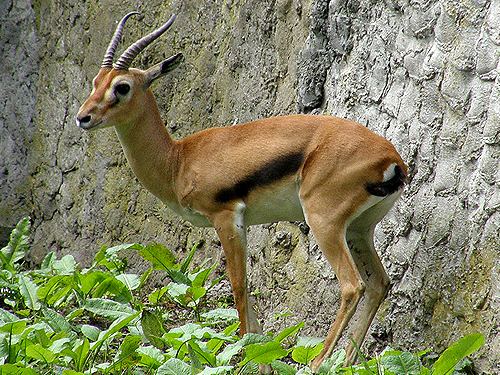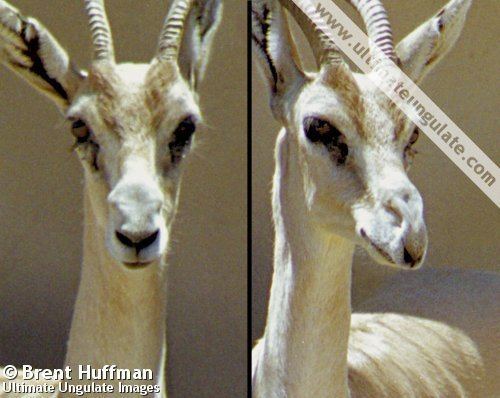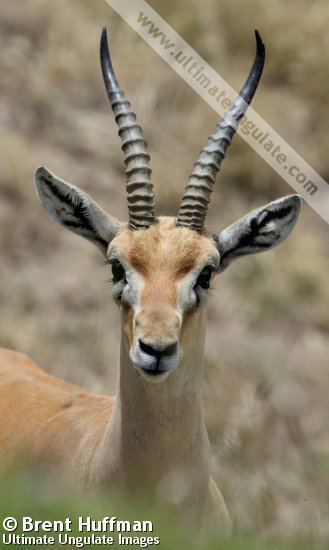Order Artiodactyla Rank Species | Phylum Chordata Genus Eudorcas Higher classification Eudorcas | |
 | ||
Similar Eudorcas, Rhim gazelle, Cuvier's gazelle, Soemmerring's gazelle, Beira | ||
The red-fronted gazelle (Eudorcas rufifrons), a species of gazelle, is widely but unevenly distributed across the middle of Africa from Senegal to northeastern Ethiopia. It is mainly resident in the Sahel zone, a narrow cross-Africa band south of the Sahara, where it prefers arid grasslands, wooded savannas and shrubby steppes.
Contents

One authority considers the Thomson's gazelle (E. thomsoni), of East Africa, a subspecies of red-fronted gazelle. The red-fronted gazelle was formerly considered a member of the genus Gazella within the subgenus Eudorcas before Eudorcas was elevated to generic status.

Taxonomy

The scientific name of the red-fronted gazelle is Eudorcas rufifrons. It was first described by British zoologist John Edward Gray.

Description

The male and female red-fronted gazelles are similar in same size, both having s-curved horns. It has a light red-brown color around its whole body, except for its white undersides and rumps. It has a distinct thin (2–4 cm (0.79–1.57 in) high) black band that runs from the elbow to the stifle (hind leg). Its face is bordered by a pair of white stripes that run from the eye to the corner of the mouth, which are more distinct than the pale white stripes that run down the face of the red gazelle, an animal commonly confused for it. It also has a black tufted tail.
The average body weight of the red-fronted gazelles ranges from 7.8 kg (17 lb) for the young fawns to 29.7 kg (65 lb) for the adults, while, the shoulder height ranges from 38.7 cm (15.2 in) for the young to 68.7 cm (27.0 in) for the adult. The characteristics of the red-fronted gazelle were determined by Waza National Park, between September 1989 and December 1993. The body length, horn length, head length, body weight, body colour, and tail length were measured from the carcases of 141 red-fronted gazelles.
Distribution and habitat
The red-fronted gazelle is native to Burkina Faso, Cameroon, Central African Republic, Chad, Eritrea, Ethiopia, Mali, Mauritania, Niger, Nigeria, Senegal, South Sudan and Sudan. It occupies habitats such as semi-arid grasslands, savannahs, savannah woodlands, and areas of scrub. It is able to adapt to extensive pastureland and abandoned agricultural land if there is some cover. It moves seasonally between different habitats.
Status
The threats faced by the red-fronted gazelle include illegal hunting, habitat degradation and competition with domestic livestock. Overgrazing of its habitat by livestock drives it elsewhere as does clearance of land for farming. Substantial populations have now dwindled to scattered remnant populations across most of its range. The International Union for Conservation of Nature has rated its conservation status as "vulnerable".
